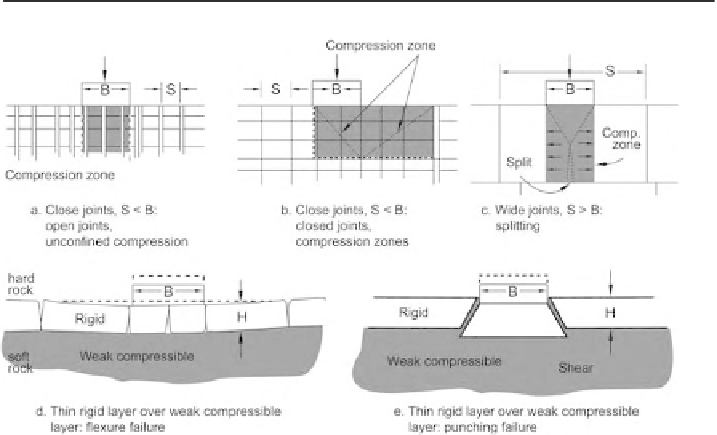Geoscience Reference
In-Depth Information
•
To obtain N* values, SPT refusal values are required in both seating and test drive
(refer Chapter 4). Note that some procedures recommend refusal in the seating
drive only - but this is insufficient data.
•
Higher values of allowable bearing capacity are likely with more detailed testing
from rock core samples.
•
The bearing capacity of some non durable rocks can decrease when its overburden
is removed and the rock is exposed and subject to weathering and/or moisture
changes.
22.3 Bearing capacity modes of failure
•
The mode of failure depends on the joint spacing in relation to the footing size.
•
Driven Piles therefore have a higher bearing capacity due to its relative size to joint
spacing.
•
Bored Piles (Drilled Shafts) have a lower bearing capacity than driven piles due to
its relative size.
Table 22.3
Failures modes in rock (after Sowers, 1979).
Relation of joint spacing (S) to
Joints
Orientation
Failure mode
footing width (B)
S
B
Open
Vertical to sub-
Uniaxial compression
<
S
<
B
Closed
vertical
Shear zone
S
B
Wide
90
◦
to
70
◦
Splitting
>
S
>
B. Thick rigid layer
N/A
Horizontal to
Flexure
over weaker layer
sub-horizontal
S
<
B. Thin rigid layer
N/A
Punching
over weaker layer
Figure 22.1
Bearing capacity failures modes (Sowers, 1979).



Search WWH ::

Custom Search